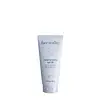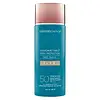What's inside
What's inside
 Key Ingredients
Key Ingredients

 Benefits
Benefits

 Concerns
Concerns

 Ingredients Side-by-side
Ingredients Side-by-side

Zinc Oxide 11.6%
Cosmetic ColorantTitanium Dioxide 0.67%
Cosmetic ColorantWater
Skin ConditioningCaprylic/Capric Triglyceride
MaskingCetearyl Alcohol
EmollientCetearyl Glucoside
EmulsifyingCoco-Caprylate/Caprate
EmollientPolysorbate 60
EmulsifyingGlycerin
HumectantSqualane
EmollientGlyceryl Isostearate
EmollientDicaprylyl Ether
EmollientIsononyl Isononanoate
EmollientMagnesium Aluminum Silicate
Absorbent1,2-Hexanediol
Skin ConditioningCitric Acid
BufferingCaprylyl Glycol
EmollientPolyglyceryl-6 Polyricinoleate
EmulsifyingXanthan Gum
EmulsifyingPolyhydroxystearic Acid
EmulsifyingLeuconostoc/Radish Root Ferment Filtrate
AntimicrobialPopulus Tremuloides Bark Extract
AntiseborrhoeicAlumina
AbrasiveGluconolactone
Skin ConditioningPotassium Sorbate
PreservativeAloe Barbadensis Leaf Juice Powder
Skin ConditioningHelianthus Annuus Seed Oil
EmollientTrisodium Ethylenediamine Disuccinate
Lonicera Caprifolium Flower Extract
PerfumingLonicera Japonica Flower Extract
Skin ConditioningFructooligosaccharides
HumectantAllantoin
Skin ConditioningSimethicone
EmollientTocopherol
AntioxidantTropolone
Skin ConditioningZinc Oxide 11.6%, Titanium Dioxide 0.67%, Water, Caprylic/Capric Triglyceride, Cetearyl Alcohol, Cetearyl Glucoside, Coco-Caprylate/Caprate, Polysorbate 60, Glycerin, Squalane, Glyceryl Isostearate, Dicaprylyl Ether, Isononyl Isononanoate, Magnesium Aluminum Silicate, 1,2-Hexanediol, Citric Acid, Caprylyl Glycol, Polyglyceryl-6 Polyricinoleate, Xanthan Gum, Polyhydroxystearic Acid, Leuconostoc/Radish Root Ferment Filtrate, Populus Tremuloides Bark Extract, Alumina, Gluconolactone, Potassium Sorbate, Aloe Barbadensis Leaf Juice Powder, Helianthus Annuus Seed Oil, Trisodium Ethylenediamine Disuccinate, Lonicera Caprifolium Flower Extract, Lonicera Japonica Flower Extract, Fructooligosaccharides, Allantoin, Simethicone, Tocopherol, Tropolone
Zinc Oxide 12%
Cosmetic ColorantWater
Skin ConditioningC12-15 Alkyl Benzoate
AntimicrobialButyloctyl Salicylate
Skin ConditioningLauryl PEG-8 Dimethicone
Isododecane
EmollientPropanediol
SolventCaprylyl Methicone
Skin ConditioningDimethicone
EmollientNiacinamide
SmoothingTridecyl Salicylate
Skin ConditioningDimethicone/Vinyl Dimethicone Crosspolymer
Skin ConditioningTrilaureth-4 Phosphate
EmulsifyingDimethiconol
EmollientLauryl PEG-10 Tris(Trimethylsiloxy)Silylethyl Dimethicone
EmulsifyingMica
Cosmetic ColorantPolyester-1
Maltodextrin
AbsorbentSodium Chloride
MaskingBisabolol
MaskingDisodium Lauriminodipropionate Tocopheryl Phosphates
CleansingEthylhexylglycerin
Skin ConditioningTremella Fuciformis Sporocarp Extract
AntioxidantAllantoin
Skin ConditioningSilica Dimethyl Silylate
EmollientCaprylyl Glycol
EmollientIsoceteth-10
EmulsifyingZein
Skin ConditioningHexylene Glycol
EmulsifyingDimethylmethoxy Chromanol
AntioxidantSynthetic Fluorphlogopite
Zea Mays Starch
AbsorbentSilica
AbrasiveCaesalpinia Spinosa Fruit Pod Extract
Hydrogenated Lecithin
EmulsifyingTetrasodium Glutamate Diacetate
Caprylic/Capric Triglyceride
MaskingHelianthus Annuus Sprout Extract
Skin ConditioningPhenoxyethanol
PreservativeSodium Benzoate
MaskingBenzoic Acid
MaskingDehydroacetic Acid
PreservativeSodium Hydroxide
BufferingSodium Myristoyl Glutamate
CleansingAluminum Hydroxide
EmollientCI 77891
Cosmetic ColorantIron Oxides
Zinc Oxide 12%, Water, C12-15 Alkyl Benzoate, Butyloctyl Salicylate, Lauryl PEG-8 Dimethicone, Isododecane, Propanediol, Caprylyl Methicone, Dimethicone, Niacinamide, Tridecyl Salicylate, Dimethicone/Vinyl Dimethicone Crosspolymer, Trilaureth-4 Phosphate, Dimethiconol, Lauryl PEG-10 Tris(Trimethylsiloxy)Silylethyl Dimethicone, Mica, Polyester-1, Maltodextrin, Sodium Chloride, Bisabolol, Disodium Lauriminodipropionate Tocopheryl Phosphates, Ethylhexylglycerin, Tremella Fuciformis Sporocarp Extract, Allantoin, Silica Dimethyl Silylate, Caprylyl Glycol, Isoceteth-10, Zein, Hexylene Glycol, Dimethylmethoxy Chromanol, Synthetic Fluorphlogopite, Zea Mays Starch, Silica, Caesalpinia Spinosa Fruit Pod Extract, Hydrogenated Lecithin, Tetrasodium Glutamate Diacetate, Caprylic/Capric Triglyceride, Helianthus Annuus Sprout Extract, Phenoxyethanol, Sodium Benzoate, Benzoic Acid, Dehydroacetic Acid, Sodium Hydroxide, Sodium Myristoyl Glutamate, Aluminum Hydroxide, CI 77891, Iron Oxides
 Reviews
Reviews

Ingredients Explained
These ingredients are found in both products.
Ingredients higher up in an ingredient list are typically present in a larger amount.
Allantoin is a soothing ingredient known for its protective and moisturizingg properties. Because of this, it is often added to products with strong active ingredients.
Studies show higher concentrations of this ingredient can promote wound healing.
Though it can be derived from the comfrey plant, allantoin is produced synthetically for cosmetic products to ensure purity.
Learn more about AllantoinThis ingredient is an emollient, solvent, and texture enhancer. It is considered a skin-softener by helping the skin prevent moisture loss.
It helps thicken a product's formula and makes it easier to spread by dissolving clumping compounds.
Caprylic Triglyceride is made by combining glycerin with coconut oil, forming a clear liquid.
While there is an assumption Caprylic Triglyceride can clog pores due to it being derived from coconut oil, there is no research supporting this.
Learn more about Caprylic/Capric TriglycerideCaprylyl Glycol is a humectant and emollient, meaning it attracts and preserves moisture.
It is a common ingredient in many products, especially those designed to hydrate skin. The primary benefits are retaining moisture, skin softening, and promoting a healthy skin barrier.
Though Caprylyl Glycol is an alcohol derived from fatty acids, it is not the kind that can dry out skin.
This ingredient is also used as a preservative to extend the life of products. It has slight antimicrobial properties.
Learn more about Caprylyl GlycolWater. It's the most common cosmetic ingredient of all. You'll usually see it at the top of ingredient lists, meaning that it makes up the largest part of the product.
So why is it so popular? Water most often acts as a solvent - this means that it helps dissolve other ingredients into the formulation.
You'll also recognize water as that liquid we all need to stay alive. If you see this, drink a glass of water. Stay hydrated!
Learn more about WaterZinc Oxide is a mineral broad-spectrum UV filter; it is the broadest UVA and UVB reflector approved by the FDA. It also has skin protectant and skin soothing properties.
Zinc oxide is one of the most effective broad-spectrum UV filters. It protects against UVB, UVAII, and UVAI. In comparison to its counterpart titanium dioxide, zinc oxide provides uniform and extended UVA protection.
Another great benefit? This ingredient is highly photostable so it won't degrade easily under sunlight.
A common myth is that mineral UV filters are widely believed to primarily reflect UV light.
However, modern research shows titanium dioxide absorbs UV radiation like chemical filters (~95% absorption & 5% reflection).
Zinc oxide has great skin soothing properties so you'll likely find this in sunscreens formulated for sensitive skin or babies/children. It is unlikely to cause "eye sting" like other sunscreen ingredients.
Regulatory agencies consider zinc oxide to be non-toxic and safe. It has also been shown to not penetrate the skin.
Unfortunately, this ingredient does leave a visible white cast. This is why mineral sunscreens are often less cosmetically elegant than chemical or hybrid ones.
In cosmetics, zinc oxide can be found in both non-nano and nano-sized forms. The nano version is used to reduce white cast and improve the texture of sunscreen formulas.
There are ongoing concerns surrounding nano-zinc oxide's impact on marine ecosystems and whether it can be absorbed into skin.
Regarding marine ecosystems and coral reefs, there is no conclusive evidence that any form of zinc oxide (or any other sunscreen ingredients) will cause harm. The science is still developing but many consumers are keeping a close eye on this issue.
Please note, many destinations have reef-safety sunscreen rules. For instance, the U.S. Virgin Islands advises all visitors to use non-nano mineral sunscreens.
There has also been some stir about whether micronized or nano zinc oxide has potential photoxicity and absorption through the skin/lungs.
An in-vitro (done in a test tube or petri dish) study demonstrated micronized zinc oxide to have potential phototoxicity. There's no need to fret; the EU Commission's Scientific Committee on Consumer Safety has stated, "The relevance of these findings needs to be clarified by appropriate investigations in vivo." Or in other words, further studies done on living organisms are needed to prove this.
Current research shows zinc oxide nanoparticles do not penetrate intact or sunburned skin. They either remain on the surface or in the outermost layer of dead skin (stratum corneum).
Zinc oxide is one of only two classified mineral UV filters with titanium dioxide being the other one.
Fun fact: Zinc has been used throughout history as an ingredient in paint and medicine. An Indian text from 500BC is believed to list zinc oxide as a salve for open wound. The Ancient Greek physician Dioscorides has also mentioned the use of zinc as an ointment in 1AD.
Learn more about Zinc Oxide